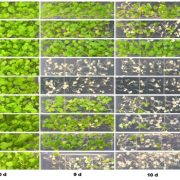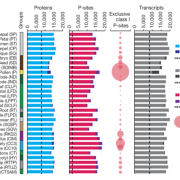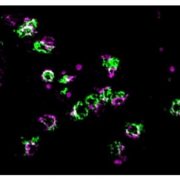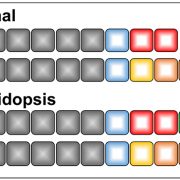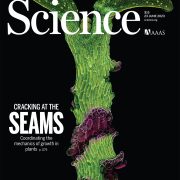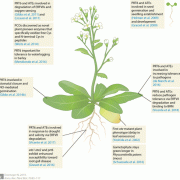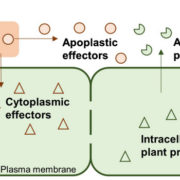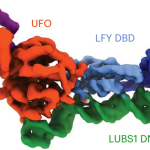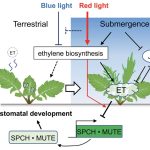BIN2 signaling network constructed using proximity labeling and TurboID
 The brassinosteroid (BR) signaling pathway is essential for plant growth and development. BRASSINOSTEROID-INSENSITIVE2 (BIN2) is a GSK3-like kinase, serving as a repressor of the BR signaling pathway. In the absence of BR, BIN2 phosphorylates BRASSINAZOLE-RESISTANT1 (BZR1) family transcription factors to inactivate them and retain them in the cytoplasm. Upon the perception of BR by its receptor kinase BRI1, BIN2 is deactivated through dephosphorylation, ubiquitination and degradation, which releases the inactivation of BZR1. Beyond that, BIN2 has been recently reported to have broader roles in the crosstalk with other hormone signaling pathways and stress responses. Thus, it is important to identify the substrates of BIN2. However, the interaction between kinases and substrates is hard to capture, due to its transient and dynamic nature. In this recent publication, Kim et al. presented huge advances in mapping the BIN2 signaling network. Using TurboID-based proximity labeling (TbPL) followed by mass spectrometry, 482 proteins were identified to be proximal to BIN2. Using BIN2 inhibitor treatment and phosphoproteomics, over one-third of these proteins were found to be dephosphorylated upon inhibition of BIN2 and considered as BIN2 substrates. These interactors and substrates of BIN2 were constructed into a BIN2 signaling network. (Summary by Xiaohui Li @Xiao_hui_Li) Plant Cell 10.1093/plcell/koad013
The brassinosteroid (BR) signaling pathway is essential for plant growth and development. BRASSINOSTEROID-INSENSITIVE2 (BIN2) is a GSK3-like kinase, serving as a repressor of the BR signaling pathway. In the absence of BR, BIN2 phosphorylates BRASSINAZOLE-RESISTANT1 (BZR1) family transcription factors to inactivate them and retain them in the cytoplasm. Upon the perception of BR by its receptor kinase BRI1, BIN2 is deactivated through dephosphorylation, ubiquitination and degradation, which releases the inactivation of BZR1. Beyond that, BIN2 has been recently reported to have broader roles in the crosstalk with other hormone signaling pathways and stress responses. Thus, it is important to identify the substrates of BIN2. However, the interaction between kinases and substrates is hard to capture, due to its transient and dynamic nature. In this recent publication, Kim et al. presented huge advances in mapping the BIN2 signaling network. Using TurboID-based proximity labeling (TbPL) followed by mass spectrometry, 482 proteins were identified to be proximal to BIN2. Using BIN2 inhibitor treatment and phosphoproteomics, over one-third of these proteins were found to be dephosphorylated upon inhibition of BIN2 and considered as BIN2 substrates. These interactors and substrates of BIN2 were constructed into a BIN2 signaling network. (Summary by Xiaohui Li @Xiao_hui_Li) Plant Cell 10.1093/plcell/koad013


